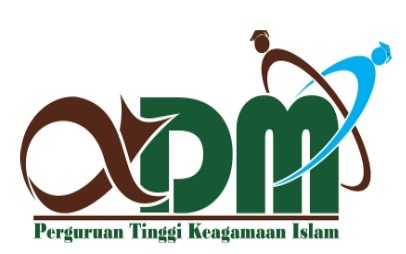Time Series Analysis for The Treatment of Typhoid (Enteric) Fever in Maiduguri: Using Arima Model
DOI:
https://doi.org/10.21580/square.2023.5.1.18282Abstract
This research employs the ARIMA model to conduct a thorough time series analysis on the treatment of typhoid (enteric) fever in Maiduguri. The study reveals the presence of both trend and seasonality in the data, with the trend indicating a recent reduction in the recorded data. Using autocorrelation and partial autocorrelation function (ACF and PACF), the data can also be utilized to determine the model's order. The model obtained is subjected to model diagnostics to determine its efficiency and the model is used to forecast the typhoid fever. From the forecast graph shows that there may be a decrease in future years due to the pattern of the series the impression, we obtain from the graph is that predicted series seems to be trend upward and then downward. ARIMA (1,0,0) has the minimum value of AIC therefore it found to be best model. Hence, the model to fit the typhoid fever based on diplomatic test, which is LJung Box test from the family of Box Janks procedure, then our P-value is less than 0.05 level of significant, we reject the null hypothesis and conclude that the typhoid fever is statistically significant at 5% level of significant. Forecast of typhoid fever from February to December 2025 we also conclude that the typhoid fever is stable. Improve Sanitation and Hygiene: Implement measures to improve sanitation and hygiene practices, especially in areas with high disease prevalence. This may include promoting access to clean water, proper waste management, and hygiene education campaigns.
Keyword: ARIMA Model, Typhoid fever, Box janks, WHO, Model diagnostic.
Downloads
References
Abboubakar, H., & Racke, R. (2021). Mathematical Modeling, Forecasting, and Optimal Control of Typhoid Fever Transmission Dynamics. Chaos, Solitons & Fractals. Vol. 149. 111074.
Adeboye, N.O., & Ezekiel, I.D. (2018). On Time Domain Analysis of Malaria Morbidity in Nigeria. American Journal of Applied Mathematics and Statistics. Vol. 6, No. 4, 170-175.
Buckle, G.C., Walker, C.L., Black, R.E. (2012). Typhoid fever and paratyphoid fever: Systematic review to estimate global morbidity and mortality for 2010. J Glob Health. 2(1).
Crump, J.A., (2019). Progress in Typhoid Fever Epidemiology. Clin Infect Dis. 68 (Suppl 1): S4–S9.
Crump, J.A., & Mintz E.D. (2010). Global Trends in Typhoid and Paratyphoid Fever. Clin Infect Dis. 50(2): 241–6.
Deris, Z.Z, Mohammad Noor S.S., Abdullah N.H & Noor A.R., (2010). Relapse Typhoid Fever in North-Eastern State in Malaysia. Asian Pacific Journal of Tropical Medicine, 48-50.
Ishaq, A.A., & Murtala, U.M. (2017). Spatio-Temporal Trends of Typhoid Fever Among Youths Attending Muhammad Abdulahi Wase Specialist Hospital in Kano Metropolis, Nigeria. Bayero Journal of Applied Sciences, 10(2), 115-121.
Khan, S., Harish, B.N., Menezes, G.A., Archarya, N.S. & Parija, S.C. (2012). Early Diagnosis of Typhoid Fever by Nested PCR for Flagellin Gene of Salmonella Enterica Serotype Typhi. Indian Journal of Medical Research, 136: 850-854.
Mathur, R, O.h H, Zhang D, Park SG, Seo J, & Koblansky, A. (2012). A Mouse Model of Salmonella Typhi Infection. Cell. 151(3): 590–602.
Mohammed, Y., Anwar, Joseph A., Lewnard, Sunil Parikh & Virginia E. Pitzer. (2016). Time Series Analysis of Malaria in Afghanistan using ARIMA Model to Predict Future Trend in Incidence. Malaria Journal. 15:566.
Obaro, SK., Iroh Tam, P.Y, & Mintz, E.D. (2017). The Unrecognized Burden of Typhoid Fever”. Expert Rev Vaccines. 16 (3): 249–60.
Downloads
Published
Issue
Section
License
The Authors submitting a manuscript do so on the understanding that if accepted for publication, copyright of the article shall be assigned to Square: Journal of Mathematics and Mathematics Education as the publisher of the journal. The copyright form should be signed originally and send to the Editorial Office in the form of original mail, scanned document to [email protected]
Square : Journal of Mathematics and Mathematics Education by Mathematics Department UIN Walisongo Semarang is licensed under a Creative Commons Attribution-ShareAlike 4.0 International License.



























